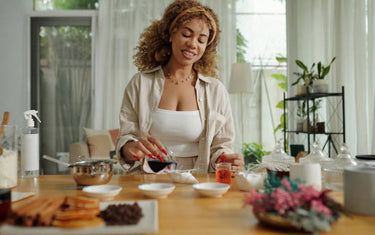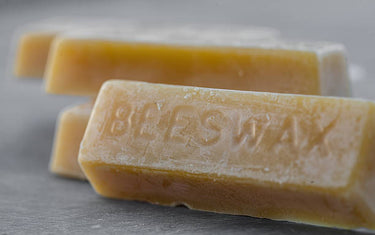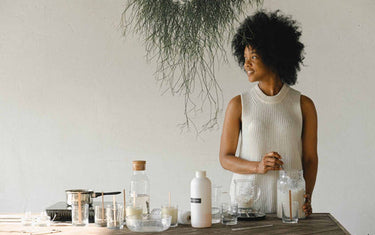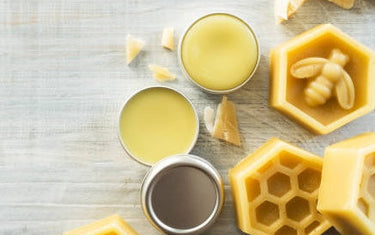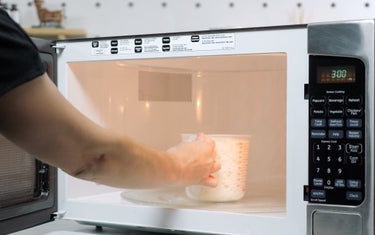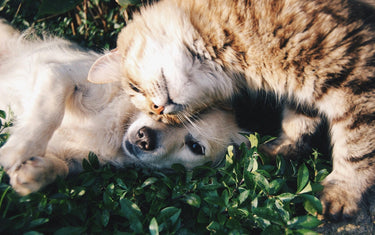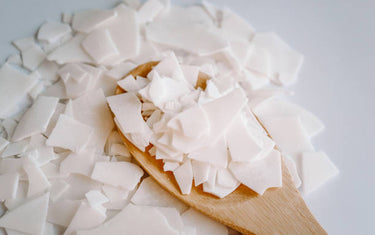8 min read / 30 January 2024 / yasmin sharp
How To Make Lavender Oil
Learn the simple process of making your own lavender oil at home with just a few basic ingredients and steps.
Share this post
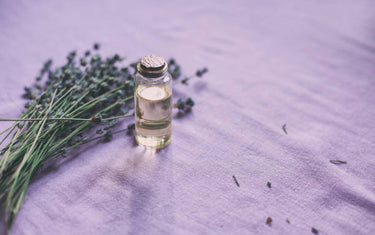
What is the best type of lavender to use to make homemade oil?
What’s the difference between lavender oil and lavender infused oil?
How long does homemade lavender oil last?
What are the best types of readymade lavender essential oils?
How do you complete a lavender oil patch test?
What are the best ways to use homemade lavender oil?
What can I do with the leftover dried lavender?
Regular users of the essential oil may find that learning how to make lavender oil at home could give them a whole new way to enjoy it.
Even if you’re a first-time user, you’ve probably heard of its ability to support a host of mental and physical conditions.
From working as a skincare or sleeping aid, to providing wound and aromatherapeutic treatments, lavender oil is one of the most versatile oils around.
Here we explain how to make lavender oil at home, whilst we also explain how long it can last, what you can use it for and more in our in-depth guide.
Summary
Here’s a quick summary of how to make lavender-infused oil:
- Harvest and dry the lavender: Cut lavender sprigs, tie them together, and hang them upside down in a warm, dry place for 12-14 days until they are fully dry.
- Infuse the mixture: Place dried lavender in a glass jar, filling it three-quarters full, and cover with a carrier oil. Let the mixture infuse for 1-3 weeks, shaking occasionally.
- Strain the lavender flowers: Once infused, strain the mixture using a cheesecloth, and store the oil in a dark glass container somewhere cool and dry.
What is the best type of lavender to use to make homemade oil?There are currently 47 known species of lavender that are categorised into more than 450 varieties, although the main types are English, Spanish, and lavandin. This can make it difficult to narrow down your options to find the best one to use for homemade lavender oil. Lavandin features in nearly all types of lavender essential oil, which is a hybrid of Lavandula latifolia (Portuguese) and Lavandula angustifolia (English). This is because lavandin has a particularly strong lavender scent that is complemented well by a variety of carrier oils. When shopping around, look out for English lavender or a Lavandula x intermedia cross, as compared to Spanish or French varieties, they usually contain better medicinal properties, which can prove useful if you intend to use the oil to treat various ailments. |
What’s the difference between lavender oil and lavender infused oil?
Making your own 100% pure lavender essential oil is quite an expensive exercise, as it would require you to invest in distillation equipment to ensure all the natural properties of the plant are maintained as it is curated into liquid form.
However, the good news is there is an alternative you could try, which is to make lavender-infused oil.
Whilst it is not as concentrated as pure essential oil it will still contain some of the plant’s natural properties that can be used for various applications.

How do you make lavender oil?
We’ve put together step-by-step instructions on how to make lavender-infused oil, which is less expensive than making pure lavender essential oil.
Step 1: Harvest and dry the lavender
The first part of learning how to make lavender oil requires you to dry out the leaves or a plant in full bloom.
After cutting at least six inches from the flower, tie the sprigs together at the base.
You’ll then have to hang the sprigs upside down in a warm, dry location that has good air circulation to dry out the lavender.
It usually takes around 12-14 days for the lavender to dry out, although depending on conditions it may take longer.
You’ll know the lavender is ready for the next stage when you can cleanly snap a stem off the plant.
Step 2: Infuse the mixture
Ideally, you should choose the type of carrier oil you want to infuse with the lavender based on the intended use.
For example, if you plan to use the oil for topical application, use a carrier oil that will work well with your complexion.
If you are a first-time user of lavender oil, you should complete a patch test to ensure it is suitable for your skin, as some people have sensitivity issues or may experience an allergic reaction.
Next, place enough dried lavender into a clean glass jar until it is at least three-quarters full.
You should then add enough carrier oil to cover the lavender, leaving enough room for it to move freely around the jar.
Replace the lid, and leave the contents to infuse for 1-3 weeks, shaking the jar occasionally to allow all the leaves to be infused.
Step 3: Strain the lavender flowers
Once the infusion period is over, you then strain out the lavender flowers mixture using a cheesecloth or similar.
Keep the infused lavender oil stored in a dark glass container in a cool, dry location away from direct light and heat sources, ensuring that the lid is firmly replaced after each use.
Hang onto the dried lavender and take a look at some of our suggestions on how to use it below.

How long does homemade lavender oil last?
After you have finished learning how to make lavender oil, you’ll probably be curious to know how long it will last for.
Generally, you can expect it to last for 1-2 years, although this can vary from case to case, depending on the type of carrier oil you use during the infusion process and how well it is stored.
To maximise its lifespan, use a brand-new carrier oil with a good expiry date for the infusion process, which should help your lavender oil to last for longer.
What are the best types of readymade lavender essential oils?
Even if you are keen to learn how to make lavender oil, depending on your daily routine and other commitments, you may not have the time to actually get around to making it.
An alternative could be to buy ready-made lavender essential oil, which allows you to enjoy the health benefits without having to wait a few weeks for the flowers to infuse.
With that in mind, two types of readymade lavender essential oil we would recommend are:
Bulgarian Lavender Essential Oil to bring calm and ease stress
Compared to most other varieties, Bulgarian lavender essential oil has a more complex scent profile, as it is sweeter than the heavily herb-influenced French variety and stronger than traditional English lavender.
Bulgarian lavender is ideal for easing and lowering stress and anxiety levels, with the oil producing a calming effect that supports better relaxation and improved sleep patterns.
French Lavender Essential is great for the mind and your home
French lavender essential oil is another option for anyone who is looking for a more medicinal agent.
The oil’s antibacterial properties can be used to treat wounds, whilst also offering pain relief and anti-inflammatory action. [1] [2]
And, as is true for all types of lavender oil, you can also use it to manage stress and for relaxation purposes.
Some people also use French lavender oil to ward off pests (spiders in particular), whilst others utilise its bacterial qualities as part of a homemade house cleaner.
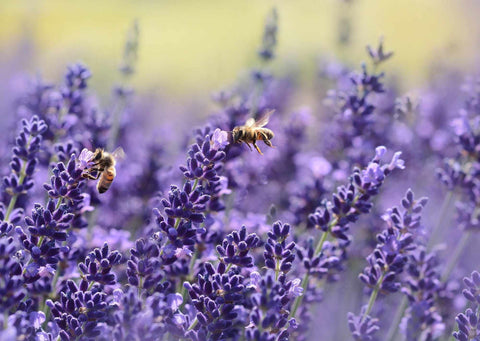
How do you complete a lavender oil patch test?
As we mentioned earlier, first-time users of lavender oil should consider completing a patch test before applying the oil topically.
Whilst most people will be able to use the oil without issue, if you have sensitive skin or an unknown allergy, using the oil could cause varying levels of irritation.
To complete a lavender oil patch test, follow the steps below:
- Mix 1-2 drops of lavender oil with half a teaspoon of carrier oil.
- Apply a few drops of the mixture to the inside of your arm.
- Cover with a plaster and leave for 24 hours.
- If you experience any irritation during this time, wash the oil off your skin and discontinue use.
If you have any redness, itching or inflammation, you could use an alternative oil (you should also complete a patch test if you are a first-time user) or there are some other ways you can enjoy the benefits of lavender oil.
What are the best ways to use homemade lavender oil?
You can use homemade lavender oil in a variety of ways, depending on the benefits you want to enjoy:
- Mix with a carrier oil and apply topically to repair wounds, treat eczema and reduce inflammation.
- Add a few drops to a lotion or cream and apply to hydrate dry skin or to combat wrinkles and other signs of ageing.
- Diffuse the oil in a diffuser or oil burner, which can create a calming aroma to ease stress, anxiety and low moods.
- Dilute a few drops of the oil with a carrier oil and mix with warm bath water to let it naturally soak into your skin.
- Make your own hair mask by blending with a carrier oil, before massaging into your hair and leaving it to settle for 30 minutes before washing out.
What can I do with the leftover dried lavender?
After you have finished learning how to make lavender oil and it has been stored away for future use, you may be wondering what you can do with the dried lavender you have left over.
Some suggestions for dried lavender include using it:
- In a potpourri mix: Potpourri is easy to make and can add a lovely fragrance to your home, especially when the pleasant aroma of lavender oil is lingering in the air.
- As part of a cooking recipe: This only applies if you are using food grade lavender. Some cooking recipe ideas include as an accompaniment to lamb, in desserts or with citrus fruits.
- By mixing it with tea: Turning dried lavender into a drinkable tea but steeping it in hot water. Make your own lavender-infused tea or simply add to pre-blended brands.

As you can see, learning how to make lavender oil couldn’t be easier. Whilst lavender-infused oil is not exactly the same as the essential oil, it can work as the perfect back up or alternative if you are running low.
You should also bear in mind that homemade lavender oil will not be able to provide the same benefits as the pure lavender essential oil.
Making the pure version of the essential oil is a costly exercise, so for a faster, more cost-effective alternative, lavender-infused oil is the way to go.
[1] Hiroko-Miyuki Mori et al. (2016) Wound healing potential of lavender oil by acceleration of granulation and wound contraction through induction of TGF-β in a rat model https://www.ncbi.nlm.nih.gov/pmc/articles/PMC4880962/
[2] Gabriela L da Silva et al. (2015) Antioxidant, analgesic and anti-inflammatory effects of lavender essential oil https://pubmed.ncbi.nlm.nih.gov/26247152/



